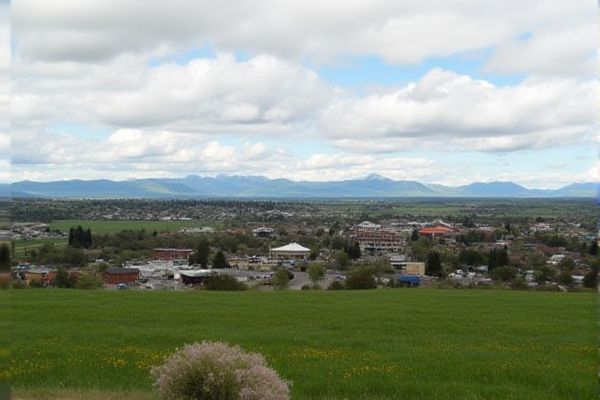
Weather and climate in Idaho: Four distinct seasons. Cold snowy winters. Hot dry summers. High desert climate. Mountainous regions affect weather. Variable daily temperatures. Late spring frost risk. Limited rainfall. Windy conditions common. Wildfire season risks.
Four distinct seasons
Idaho experiences four distinct seasons characterized by diverse weather patterns. During spring, from March to May, temperatures gradually increase along with rainfall, paving the way for the warm and dry summer months where temperatures can reach up to 95°F. As fall arrives, from September to November, the state enjoys mild temperatures and vibrant foliage, offering a picturesque transition into winter. Winter in Idaho brings cold temperatures with significant snowfall, particularly evident in the northern regions. The state's climate is varied, significantly influenced by its geographic diversity, encompassing semi-arid, continental, and maritime conditions. For more detailed insights into Idaho's climate patterns, visit the Idaho Weather page.
Cold snowy winters
Idaho's winters are known for their brutally cold temperatures, with average lows ranging from -10°F to 10°F (-23°C to -12°C) during the months of December through February. These cold conditions are often accompanied by significant snowfall, particularly in the mountainous regions, where some areas can receive over 100 inches of snow annually. For more insights on the highs and lows of this chilly season, you can explore comprehensive information on Idaho Forged, which delves into the intricate details of Idaho's winter weather patterns.
Hot dry summers
Idaho's summers are typically warm and dry, with temperatures ranging from 75°F (24°C) to 95°F (35°C), and can reach up to 100°F (38°C) in southern parts of the state, characterized by low humidity, often below 25 percent. For more detailed information on the state's weather patterns, you can visit Idaho Weather, which provides insights into the regional climatic conditions.
High desert climate
Idaho's high desert climate, particularly in areas like Boise, is characterized by significant diurnal temperature fluctuations, low humidity, and limited precipitation due to the influence of mountain ranges and high altitude. This unique climate results in hot days and cool nights, making the region distinctive in its weather patterns. For more information on the impacts of these conditions, visit the Idaho Statesman website.
Mountainous regions affect weather
Idaho's mountainous regions significantly impact its weather and climate, with higher elevations receiving up to four times more rain and snow than lower areas. The state's topography creates a rain shadow effect, particularly in southern Idaho, and influences the distribution of precipitation, with the majority falling during the cool season (November-May) and affecting the formation and melting of crucial mountain snowpack. For more detailed insights, please visit the State Summaries website which provides comprehensive information on Idaho's climate conditions.
Variable daily temperatures
Idaho experiences significant variability in daily temperatures, with the diurnal range being lowest in winter, such as 14°F in January at Boise, and greatest in the warmer months, exceeding 30°F from July to September. This variability becomes more extreme in high valleys and the semiarid plains of the Snake River Valley, where temperatures can range from as low as -60°F to as high as 118°F. For more detailed climate information, you can visit the Western Regional Climate Center's Idaho Climate Narrative.
Late spring frost risk
In Idaho, the average last frost-free date in the spring is around Mother's Day, but frosts can occur as early as April or as late as June. This variability and risk of late spring frosts can impact gardening and agriculture across the region. For more detailed information and guidance on frost dates, you can visit the Idaho Master Gardener website, where extensive resources are available to help understand and navigate these changes.
Limited rainfall
Idaho experiences limited rainfall, particularly in its low-elevation regions such as Southern Idaho, which are shielded by mountains and receive less than 14 inches of precipitation per year on average. Much of the state's agricultural lands and population rely on water from mountain snowpack and precipitation from Pacific Storms.
Windy conditions common
In Idaho, particularly in the Treasure Valley and Nampa, windy conditions are common, with prevailing winds coming from the southeast, northwest, and west. Mean wind speeds vary by month, ranging from 7mph in January and October to 9mph in April, with peak gust speeds occasionally exceeding 24mph. For more detailed information about the local climate, you can visit the City of Nampa website.
Wildfire season risks
Idaho's wildfire season, peaking in July and August, is exacerbated by climate change, leading to longer and more intense fire seasons due to warmer temperatures, reduced snowpack, and earlier snowmelt. These factors create drier conditions and increase the risk of large and destructive wildfires. For a comprehensive understanding of the region's fire challenges and strategic approaches, the Idaho Fire Season In-Depth Guide provides valuable insights on adaptation and mitigation strategies to address these escalating threats.
